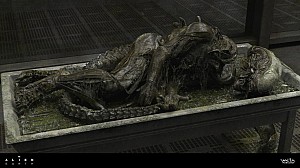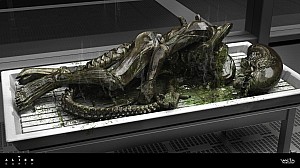This post was published by a guest. The views expressed are those of the author and do not necessarily reflect the views of alien-covenant.com.
It is not cheap to create on-screen scares. The Alien moves you watch, real money was spent heavily on sets, suits, and big motion effects. These totals grew with each film. In this article, we walk through what each of the top Alien movies cost, why their budgets were high, and what was gained from the box office.
Entertainment analyst Gerda Grinova gives a breakdown of the numbers in plain words, providing quick lists and links to trusted sources, plus tips on reading budgets like betting odds, so every fan can follow along.
And since we're talking about the entertainment industry, a comparison with gambling is appropriate here: just as studios invest money in production, players evaluate potential winnings.
For those interested in the entertainment market and the gaming industry, the review of Canadian online casinos with the highest payouts may be useful. This resource collects information about platforms, their conditions, and features, allowing you to understand which casinos offer the most generous payouts and how the market works, without having to place bets right away.
This approach helps you see how investments in a film or game translate into real results, whether it's box office receipts on screen or analytical indicators of online entertainment platforms.
THE MONEY INVESTED - TOP FILMS
-
Alien (1979). A small start but has a huge bite. The studio spent about $10.7M on this movie alone. In return, the movie generated about $188M globally. That’s a huge return for a lean, horror film.
- Aliens (1986). According to The Numbers, the Alien sequel cost about $17M. A bit higher as it pushed action and effects more and earned about $183M worldwide. Bigger spend, not up to but a strong payoff.
- Alien 3 (1992). This movie had loads of troubles on set, which made costs climb. Reports put the budget between $50-60M. It made about $159M from the office. A solid pay but definitely not a smash.
- Alien: Resurrection (1997). Now this one surely wasn’t cheap. With water work, creature shots, and star power, you’ll know the budget will be high. Budget sources vary between $60-70M. The global payout was about $161M. Respectable, but still nothing huge, especially when compared to the first.
- Prometheus (2012). Big sets and big ideas require fat checks and deep pockets. The budget was around $130M. Its sales soared as high as $403M worldwide. Becoming the franchise high in global gross.
- Alien: Covenant (2017). According to Box Office Mojo, the return amount spent was about $97M. The movie earned about $241M worldwide. Quite a good number, but a step down from Prometheus.
Speaking on the debut movie, Director Ridley admitted, “The budget at the moment was squeezing around just under $4million…. At the end of that meeting, the budget jumped to $8.2 million.”
Some entries cashed big (Alien, Prometheus). Others had a good pay but didn’t blow out the scoreboard (Alien 3, Resurrection, Covenant).
SO WHERE DID THE MONEY GO AND WHY DID IT INCREASE?
Big movies spend lots of money fast. The Alien franchise spent on 3 major categories: worlds, creatures, and people.
- Worlds: Those eerie ships and labs you see are expensive. Builders make full rooms, long halls, and strange tools, those too are not cheap. The Lighting teams add smoke and shadow so every corner feels real. As the series grew, the sets became bigger, the tasks longer and the bill? Of course more costly.
- Creatures: Early films used suits, puppets, and miniatures to represent various characters. Films later on mixed that craft with CGI. Both methods take time and experts to execute right. When a scene adds water, fire, or wires, costs move in an increasing fashion. It looks great on scream but it equals longer days, more crew, and bigger checks.
- People: The stars are the face of the movies. As series progress, new names join, schedules increase, rewrites and reshoots also occur. Each change adds more days which translates to more dollars. Not forgetting the safety rules and location shoots that adds even more cost.
So why did budgets rise? In simple terms, Ambition. Each sequel tried to top the last. Bigger worlds. Sharper sound. Louder scares. Sometimes that paid off. Sometimes it didn’t.
READING THE BOX OFFICE LIKE ODDS, DID THE BETS PAYOFF?
A budget is like a stake. The Box office is the payout. But then it’s not an easy give and take situation. The studio also pays for the film marketing and ticket money are shared with theatres.
A simple but golden rule is that a film often needs to make about 2x its production budget at the box office to break even, sometimes it needs more. That’s the reason why a $100M movie that earns $200M is just fair. Assuming it earns $400M, then we can call a clear win.
This is the moment where fans can think like smart bettors. Look at the money spent, then look at what came as returns. When the screen shows careful craft, strong sets, clear story, sharp sounds, you are aware the money was splurged heavily. When the shoots run long, stories transition late, or the effects are not inline with the plot, you can be certain the payouts won't be massive.
3 EASY SIGNS OF A MONEY SPENT WELL
- The world feels real: the sets look real, props and corridors are well detailed, and not just some empty space.
- Creatures sell the horror: the suits and CGI look alive even in close–ups, their movements also feels natural.
- Sounds hits: The sounds make you feel its presence, the engines, the doors, including the silence. Music lifts the scenes, not drowning it.
3 QUICK SIGNS OF MONEY DIDN’T WORK
- Shiny but no effects: you see big explosions but weak story or effect.
- Creatures or space ships look weightless
- Empty scale: huge rooms with no details. Everything looks fake.
THE VERDICT
It's important to know that big budgets don’t result in big wins just like that. The Alien films are proof that money works best when it creates real worlds, strong creatures, sharp sounds, and a clear story line.
“Most films of this size and scale would cost north of $200 million. The Creator, however, carries a budget of $80 million. Yet, its a beautiful film with visuals that puts the effects of big-budget projects to shame.” – A-list producer points out the lesson that spending matters less when you work smart.
As a fan, watch the signs; the details you feel, the scares that hold you up close and scenes that flow. If that is what you experience, the money spent on the movie was worth it. If not, it was just noise and a waste of resources.
Visit the Alien Day blog here for the latest coverage on all things happening for Alien Day!

Mondo unveils first-ever Mantis Xenomorph figure, hot on the heels of Alien Day 2025!
Mondo have just unveiled their Aliens - Mantis Alien Soft Vinyl Figure and pre-orders for the figure will open tomorrow, starting at 12pm CT. Wit...

NECA unveil Alien: Romulus - Deluxe Suspended Lab Xenomorph XX121 figure!
What became of Big Chap / Kane\'s Son - the iconic Xenomorph from Ridley Scott\'s original Alien, which was picked up and eventually destroyed on boar...

Alien: Cult novel preview released for Alien Day 2025!
Alien: Cult is an upcoming novel by Gavin G. Smith which follows the story of an FBI agent on the trail of a brutal serial killer, who gets caugh...










